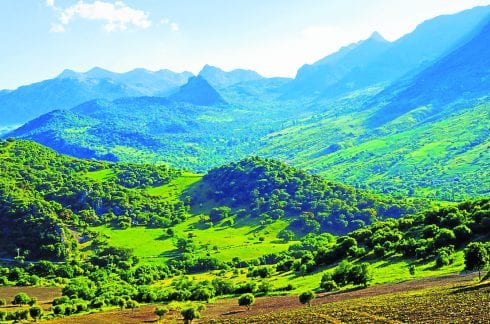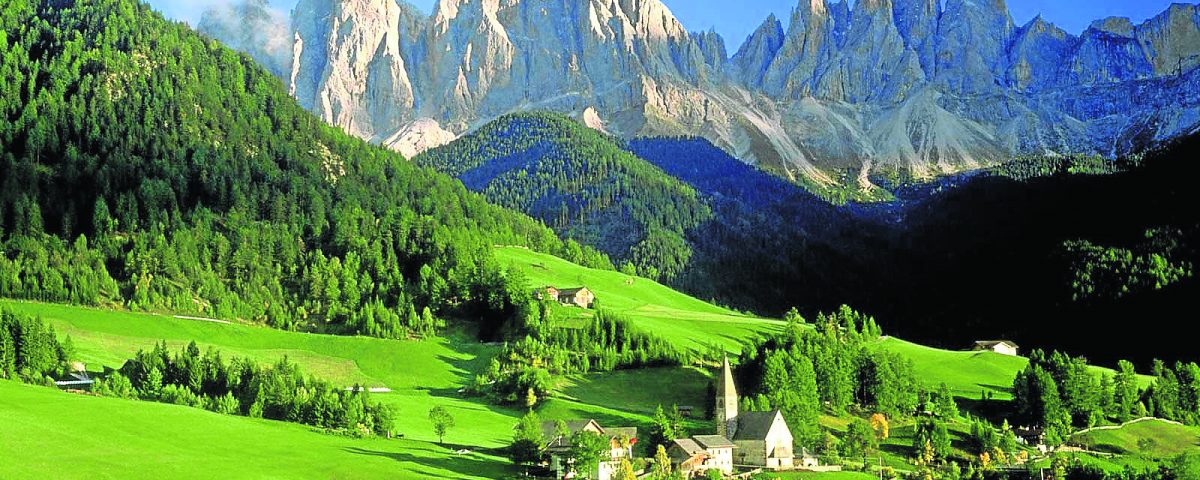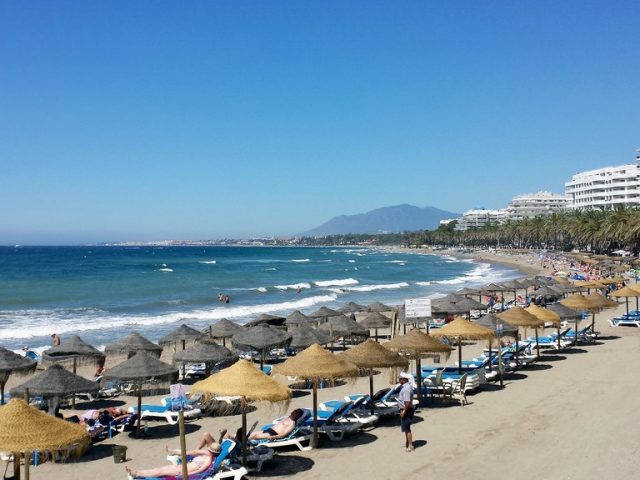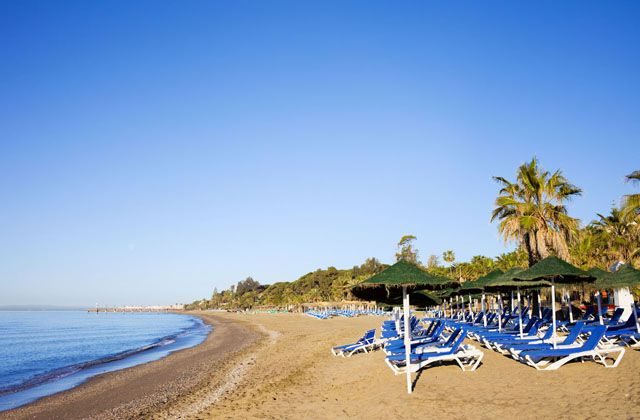- Have any questions?
- +34 951 273 575
- info@allaboutandalucia.com
IN PICS: Spain’s five major landscapes and how their gardens grow

British holidaymakers help smash January tourism record in Spain
March 3, 2019
Anchovy bonfire signals end of Carnaval de Malaga
March 5, 2019-

Canary Islands -

Pyrenees -

Cantabrian Mountains -

Meseta Central -

Andalucia
SPAIN is a rainbow nation of biodiversity offering Med sunshine and snow, desert and rain belt, lush river valleys and soaring mountain peaks all within its borders—volcanoes too, if you count the Canary Islands.
In fact it has 7.5 BILLION trees spread across 18 million hectares of forest which makes it the second most green country in Europe after Sweden. The forest mass has increased by 31% between 1990 and 2010 thanks to protection efforts by Spain’s leaders, and now absorbs 37% of all CO2 in Spain.
Occupying two thirds of the Iberian Peninsula, washed by three bodies of water—the Atlantic, the Med and the Strait of Gibraltar—Spain’s windswept coasts and scorching interior make it one of the most climatically eclectic countries in the world.
In fact it has 13 climate zones, not counting the Canaries, which is why you can find everything from date palms and chestnut trees to ancient dwarf olives and statuesque pines as tall as they grow in Canada.
Spain is the second most green country in Europe.¨
That contrast is vividly showcased in its five major landscapes: the Andalucian Plain, Meseta Central Plateau, Cantabria Mountains, the Pyrenees and the Canaries.
Check out our vegetation guide to discover how Spain’s multi-geographical garden grows.

Andalucian plain
The multiple personalities of Andalucia offer alpine mountains, dust bowls, fertile plantations supporting subtropical fruits and olive trees that date back to the Norman Conquest.
But you could think of the region as two distinct mountain ranges with a river running through it.
The Sierra Morena, one of the last strongholds of the endangered Iberian lynx, spans Huelva, Sevilla, Cordoba and Jaen.
It’s dominated by narrow valleys, evergreen forests and shrubland with huge swathes reserved for grazing, viticulture and olive farming. Along its rivers you’ll find alders, elms, ash and hackberry trees, just like in England.
In southeastern Andalucia the land abruptly rises into the Baetic Cordillera mountain range, which includes the snow-capped ski wonderland of the Sierra Nevada. As well as Los Alcornocales Natural Park—Europe’s largest cork oak forest—the Baetic is home to Mediterranean woodlands and coniferous forests.
The Sierra Morena in Andalucia is one of the last strongholds of the Iberian lyn
Further south the terrain turns into the arid ‘badlands’ that cover much of Granada and Almería provinces with huge swathes of desert, known as the Andalucian Steppes.
The Guadalquivir River flows southwest across most of Andalucia before emptying into the Atlantic Ocean west of Cadiz, irrigating the region’s famous plantations which provide the rest of Europe with year-round strawberries, avocados and salad veg.

Meseta Central
This vast plateau surrounded by mountains with Madrid at its centre extends over 210,000 km2 and is the oldest and most complex geologic formation on the peninsula.
Dry and prone to temperature extremes, vegetation has to struggle harder here. Encompassing Castile-León, Castile-La Mancha and the wilds of Extremadura, think Don Quixote riding over the dusty plains and you’ve got the picture.
However its river basins of the Duero, Tagus and Guadiana provide ideal growing conditions for some of the best wines in the world and three of its mountain ranges—the Montes de Valsaín, Bejar and Francia—are UNESCO biosphere reserves.

Cantabrian Mountains
CThe rain in Spain falls mainly on the plains of this region.
As green as Ireland or west coastal France, thanks to the plentiful precipitation, its wet and temperate oceanic climate helps lush pastures and forests to thrive.
Encompassing the Bay of Biscay, Galicia, Asturias and Cantabria, the climate is determined by the Atlantic Ocean winds whose moisture gets trapped by the mountains—perfect growing conditions for emerald forests of beech, oak and, since the late 20th century, plantations of eucalyptus and Monterey pine which supply the paper industry.
The valleys of Laciana and Omaña y Luna, the Picos de Europa and Los Ancares are all UNESCO biosphere reserves.

Pyrenees
Stretching for 430 km from the Mediterranean Sea to the Bay of Biscay, this mountain backbone forms a natural border between Spain and France.
The western end sees an abundance of rainfall, making its foothills a hotbed for vegetation.
Home to some 200 endemic species of flora, which only grow on its high mountain passes, including several types of saxifrage, the Pyrenees is almost as biodiverse as the Alps.
It’s also one of the last refuges for several endangered species of fauna including the brown bear and the lammergeier.

Canary Islands
Estranged from the mainland in a different latitude off west Africa’s Atlantic coast, the Canaries are of volcanic origin and contain the highest peak in Spanish territory, Mount Teide, which rises to a skyscraping 12,198 ft on the island of Tenerife.
According to their position with respect to north-east trade winds, the climate can be mild and wet or very dry, which gives each island in the archipelago its own distinct microclimate.
The westerly islands of El Hierro, La Palma and La Gomera have a climate influenced by the moist Canary Current.
They are well vegetated, even at low levels, with extensive tracts of sub-tropical laurisilva—or laurel—forests whose broadleaf trees flourish in humidity.
All four of the islands’ national parks are under protection—Garajonay, La Gomera and Teide in Tenerife as UNESCO World Heritage Sites and Caldera de Taburiente, La Palma, and Timanfaya in Lanzarote as World Biosphere Reserves.
IN NUMBERS
– 80% of Spain’s forests are privately owned
– 17,000 football stadiums make up Navarra’s Irati Forest, Europe’s – – second largest beech forest
– 11,200,000 hectares of protected forest areas in Spain
– 18,000,000 hectares of forest
– 1,500,000,000 oak trees account for 20% of all trees in Spain
– 7,500,000,000 trees in Spain




